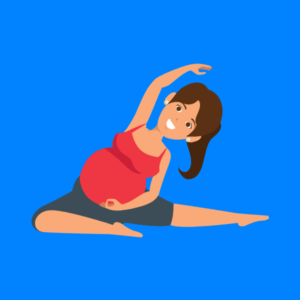It’s so exciting to watch your toddler’s development. Parents look forward to those moments but then start getting worried if your child is not doing some things early enough and some of their peers have started doing so.
Every child is different and just because one child has started walking/talking doesn’t mean another should walk and talk at the same time. However, below are some benchmarks that you can use to know whether to be concerned:
Language Development
Toddlers will pick up familiar words that have been spoken around them as they are growing. By age 3, your child will transition from about three recognizable words to saying multiple sentences. Many speech and language delays can be identified by 18 months of age.
By 18 months, your child should be able to:
- Refer to themselves by name
- say about 5-10 meaningful words
- Follow simple commands such as “sit down” or “come here”
- understand more than they can say in words.
- Recognizes words for common objects or people
- Is using a variety of sounds when babbling or when imitating words
By 24 months, your child should be able to:
- speak in sentences of two to four words
- Starts asking questions like “why” and “what” and begin using basic pronouns like me, you.
- Is acquiring new vocabulary every month
- Is able to identify basic body parts when named
By 36 months, your child should be able to:
- have a two- to three-sentence conversation and use five or six words in a sentence.
- Uses most sounds correctly in words and phrases
- Plays with other children, takes turns, engage in back and forth dialogue
- Speak well enough that most people understand what they’re saying
- Answer “why” or “what” questions
Play Skills
This is where children learn to use both verbal and nonverbal language, explore social interactions and learn the skills needed to engage with others. Play builds the foundation for a lifetime of learning. A child struggling with play can be a sign of underlying issues including language development, sensory regulation, social-emotional development and even fine and gross motor development! Play is your child’s work and the avenue through which we need to teach.
By 18 months, your child should be able to:
- Imitates adult behavior and routines
- Engages in greetings and salutations (good bye, hello)
- Beginning to engage in pretend play (hugs doll, gives doll a drink)
- Has toy preferences
By 24 months, your child should be able to:
- Play with, or next to other kids happily
- Intentionally disobeying instructions to see what happens
- Engage in imaginative play with familiar objects
- Mimic what other people do and say, including other kids
- Shows interest in others and attempts to interact in play
By 36 months, your child should be able to:
- take turns while sharing and playing with objects even when they don’t want to
- Actively engages in and initiates pretend play
- Start showing concern and comfort for other kids.
- Is able to carry on a conversation with a peer, engage in play based dialogue
Gross Motor Development
The development of these skills involves the use of your child’s whole body movements and involves the larger stronger group of muscles. These are the muscles that enable your baby sit, walk, crawl and hold his/her head up and build their ball skills
By 18 months, your child should be able to:
- Walk independently.
- Climb and stand on a chair
- Walk down stairs holding rail or your hand, one step at a time.
- Walk into a ball when trying to kick it
By 24 months, your child should be able to:
- Walk with more direction and jump with both feet together
- Kick a ball forward and attempt to catch it with both hands
- Walk up and down stairs alone while holding onto something or your hand.
- Jump and stand on tiptoes with support
By 36 months, your child should be able to:
- Kick and throw a ball without losing balance
- walk on tiptoe
- catch a ball with arms bent
- Jump and stand on one foot
- start riding a tricycle
- Run and walk without falling
Fine Motor Development
Fine motor skills, on the other hand refers to the development of the body using small muscles of the hands. They are the foundational skills which many children will need to complete academic skills as well as cutting with scissors, open and close buttons etc.
By 18 months:
- Point to pictures in books by using his/her index finger
- Build a tower using 2 blocks
- Hold cup and drink, with some spilling
- Use both hands to hold a toy together
- Use both hands together to put in/take out/stack objects
By 24 months:
- Turn single pages, 2 or 3 at a time, in a book
- Build a tower with 3-6 blocks
- Begin to hold crayons using the thumb and fingers
- Use one hand more often than the other for most activities
- Begin to string large beads
- Put on some items of clothing with supervision
By 36 months:
- Snip with scissors and cut across a piece of paper
- Turn single pages in a book
- Using thumb and finger to hold crayons
- Fold paper in half
- Use one hand more often than the other for most activities
- Roll, pound, squeeze, and pull clay
- Put on clothes with supervision
Feeding Skills
We have all heard the phrase as children “Don’t play with your food!”; little did our parents realize that there is a lot of learning that happens while playing with food! The exploration of textures, colors, and tastes as well as how our little bodies work with solids and liquids with our hands is a world of exploration! During this stage your child is beginning to develop likes and dislikes, learning to try new things and is refining their ability to orally handle different types of foods. The term “picky eater” is often heard during this stage of development. There are many reasons why a child may develop a limited repertoire of food they will eat and determining the underlying reason is key in developing an effective therapy program. Oral weakness, sensory integration, oral motor coordination, and anxiety are all possible underlying reasons a child may develop an aversion to feeding. Here are a few guidelines to help determine if your child is having trouble in this area of development.
By 18 months:
- Hold her own cup and drink, with some spilling
- Feed himself using a spoon, with some spilling
- Use tongue well to move food properly in the mouth
- Lips closed during chewing and bite food well
- Eats a variety of foods and also start showing likes and dislikes for some foods.
By 24 months:
- Chewing with round and round jaw movements
- swallow food and drink liquid with no spilling
- Transitions from bottle to cup drinking; is in the process of giving up the bottle
- Scoop food to feed self, with some spills
- Plays and explores foods of varying textures with hands
- Able to stab food with food and lift it to mouth to eat
By 36 months:
- Will use a fork and spoon well
- Wipes mouth and hands with napkin
- Attempts to serve self at table with spills
- Is able to pour liquids into cup from small containers
- Eat the same food as rest of the family.



